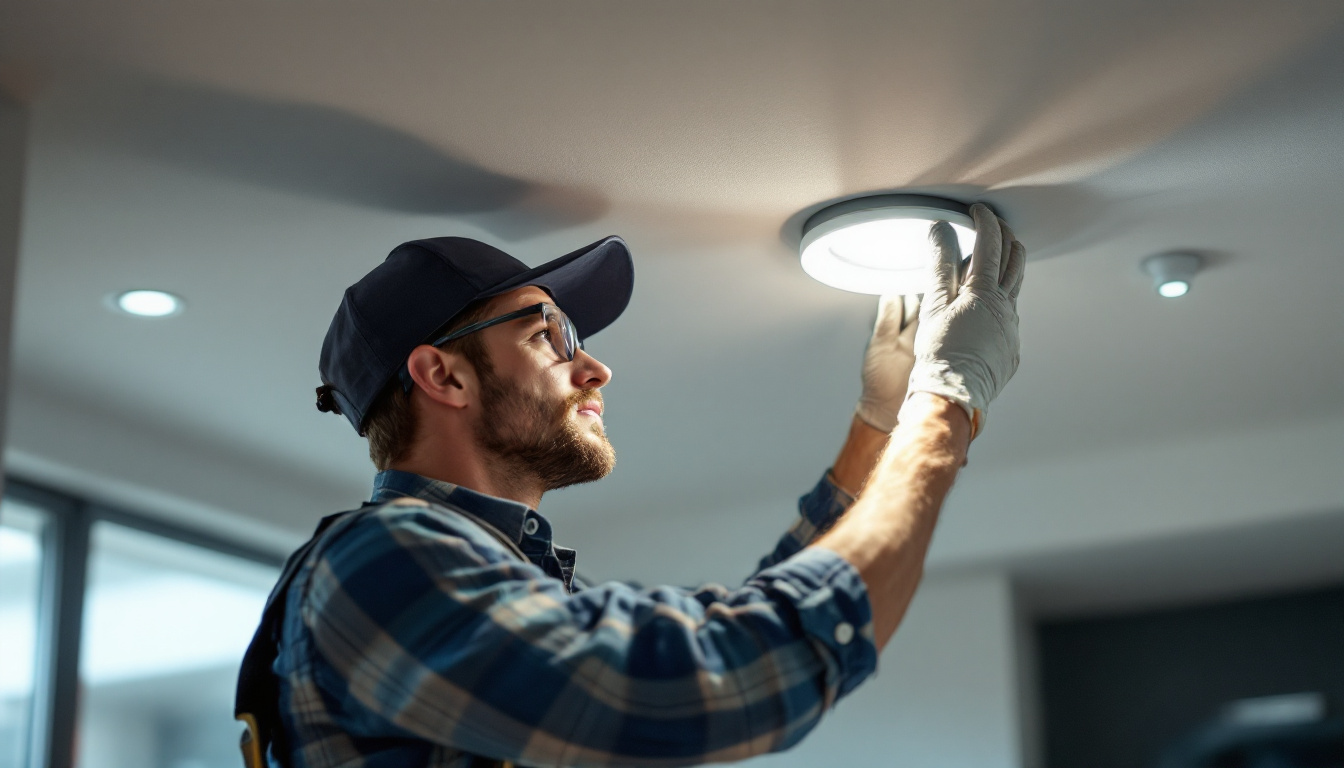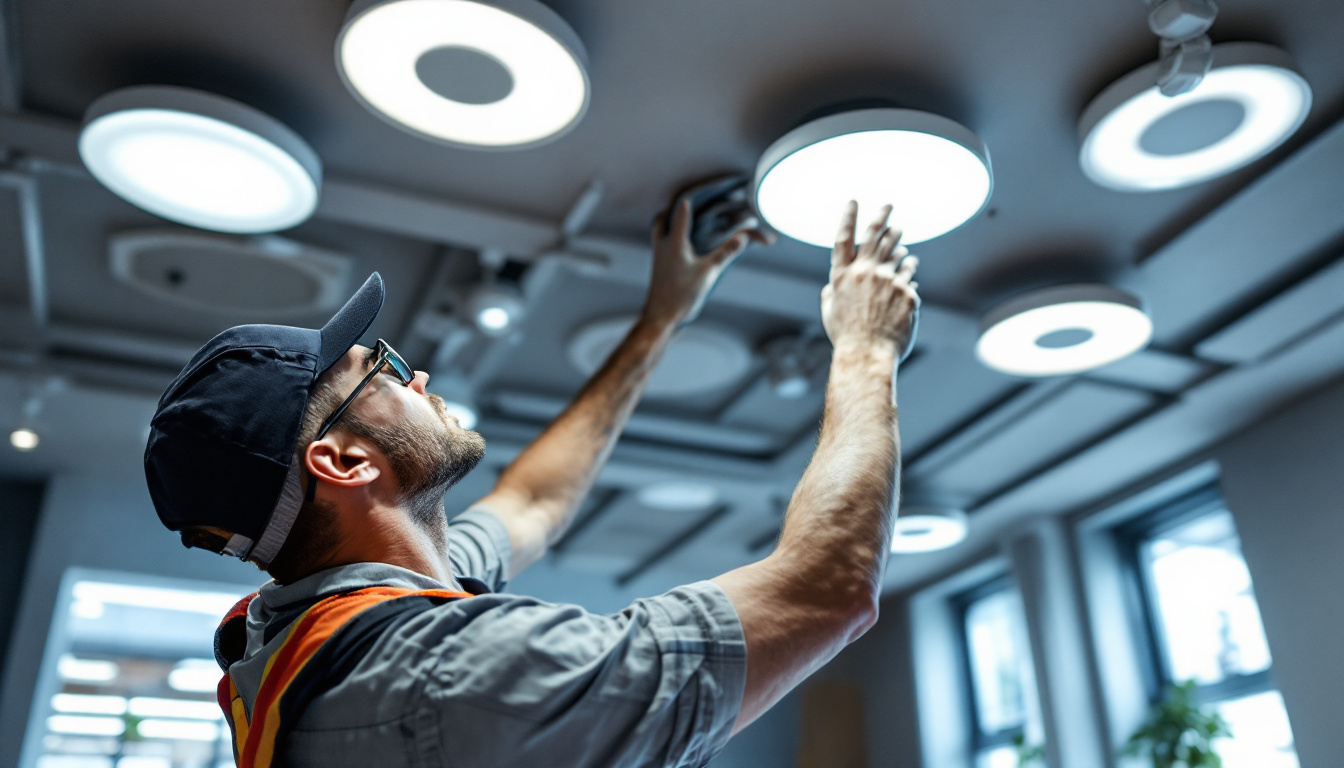
In the ever-evolving world of lighting design and installation, compliance with regulations is paramount. For lighting contractors, understanding the nuances of ceiling light installations is crucial not only for meeting legal standards but also for ensuring safety and efficiency. This article delves into the compliance aspects of ceiling lights, providing essential insights for lighting contractors.
Compliance regulations for ceiling lights encompass a variety of standards that ensure safety, energy efficiency, and performance. These regulations can vary significantly depending on the region, the type of installation, and the specific application of the lighting. Familiarity with these regulations is essential for lighting contractors to avoid penalties and ensure client satisfaction.
The National Electrical Code (NEC) serves as a foundational guideline for electrical installations in the United States. For ceiling lights, contractors must pay close attention to Article 410, which covers luminaires, lampholders, and fixtures. This article outlines the requirements for installation, including spacing, mounting heights, and the types of materials that can be used.
Compliance with the NEC not only ensures safety but also enhances the longevity of the lighting system. For instance, using the correct wiring methods and ensuring that fixtures are properly grounded can prevent electrical hazards and reduce the risk of fire. Additionally, understanding the NEC’s provisions can aid in the selection of fixtures that are rated for specific environments, such as damp or wet locations, which is crucial for installations in areas like bathrooms or outdoor spaces.
In addition to safety regulations, energy efficiency standards play a significant role in ceiling light compliance. The Department of Energy (DOE) and various state agencies have established guidelines aimed at reducing energy consumption. These include regulations on luminaire efficacy, which measures how much light is produced per watt of electricity consumed.
Lighting contractors must stay informed about these standards, as they can impact the types of fixtures that can be installed. For example, certain incandescent bulbs may be phased out in favor of more energy-efficient options like LED or fluorescent lighting. Understanding these changes can help contractors recommend the best solutions to their clients while ensuring compliance. Furthermore, energy-efficient lighting options often come with additional benefits, such as lower utility bills for clients and potential rebates or incentives from local governments aimed at promoting sustainable practices.
Moreover, the integration of smart lighting systems is becoming increasingly relevant in the context of energy efficiency. These systems not only allow for remote control and automation but also enable users to monitor and adjust their energy consumption in real time. As regulations evolve, contractors must familiarize themselves with the latest technologies and their compliance implications, ensuring that they can provide clients with cutting-edge solutions that align with both regulatory standards and modern energy-saving practices.
Ceiling lights come in various forms, each with its own set of compliance requirements. Familiarity with these types can help contractors make informed decisions about installations and ensure adherence to relevant regulations.
Recessed lighting, often referred to as can lights, is a popular choice for modern interiors. However, these fixtures must comply with specific insulation contact (IC) ratings to ensure safety. IC-rated fixtures can be installed in direct contact with insulation, while non-IC fixtures must be kept a safe distance from insulation materials.
Contractors should also consider the type of bulbs used in recessed lighting. LED options are not only energy-efficient but also produce less heat, reducing the risk of fire hazards. Ensuring that the chosen fixtures meet both NEC and energy efficiency standards is essential for compliance. Additionally, the placement of recessed lights can significantly affect the overall ambiance of a room; proper spacing and alignment can enhance both functionality and aesthetics, making it critical for contractors to plan layouts carefully.
Surface-mounted ceiling lights are versatile and can be installed in various settings, from homes to commercial spaces. Compliance for these fixtures often revolves around their mounting and electrical connections. Proper installation methods must be followed to ensure that the fixtures are securely attached and that wiring is safely routed.
Additionally, contractors should be aware of the lumen output and energy consumption of surface-mounted fixtures. Choosing products that meet or exceed energy efficiency standards can help clients save on utility bills while maintaining compliance with local regulations. Furthermore, surface-mounted fixtures can vary in design, from sleek modern styles to more traditional looks, allowing contractors to cater to diverse client preferences while ensuring that all installations adhere to safety and performance standards.
Pendant lights add a decorative touch to any space but come with their own compliance considerations. The height at which these fixtures are installed is crucial, especially in commercial environments where safety is a concern. Ensuring that pendant lights are hung at appropriate heights can prevent accidents and comply with building codes.
Moreover, contractors should be mindful of the electrical requirements for pendant lights, including the need for proper wiring and circuit protection. Compliance with NEC guidelines regarding the use of dimmers and switches is also essential, particularly in spaces where adjustable lighting is desired. The choice of materials and finishes for pendant lights can also impact compliance; for example, fixtures made from non-combustible materials are often preferred in commercial settings to enhance safety. Additionally, the style and design of pendant lights can play a significant role in the overall décor of a space, making it important for contractors to balance aesthetic appeal with stringent compliance standards.
Compliance is not just about following regulations; it also involves implementing best practices during installation. Lighting contractors should adopt a systematic approach to ensure that every ceiling light installation meets safety and performance standards.
Before installation begins, thorough planning and design are critical. Contractors should assess the space and determine the appropriate type of ceiling lights based on the intended use, aesthetic preferences, and compliance requirements. This planning phase should include a review of local codes and regulations to ensure that all aspects of the installation will be compliant.
Incorporating energy-efficient lighting solutions into the design can also enhance compliance with energy standards. By using software tools or design guidelines, contractors can create lighting layouts that optimize both functionality and compliance.
Wiring and connections are among the most critical aspects of ceiling light installations. Contractors must ensure that all wiring is performed according to NEC guidelines, including the use of appropriate wire types and sizes for the specific application. Proper connections not only enhance safety but also improve the overall performance of the lighting system.
Additionally, using high-quality connectors and junction boxes can reduce the risk of electrical failures and ensure compliance with local regulations. Regular inspections during the installation process can help identify potential issues before they become significant problems.
Once the installation is complete, thorough testing and verification are essential. Contractors should conduct a series of tests to ensure that all fixtures are functioning correctly and that they comply with safety and performance standards. This may include checking for proper voltage levels, verifying that dimmers and switches operate as intended, and ensuring that all fixtures are securely mounted.
Documentation of the testing process can serve as proof of compliance and can be invaluable in the event of an inspection or audit. Providing clients with this documentation can also enhance trust and demonstrate a commitment to quality workmanship.
Even experienced lighting contractors may encounter compliance challenges during ceiling light installations. Understanding these common issues can help contractors proactively address them and ensure successful project outcomes.
One of the most significant challenges in the lighting industry is staying updated with changing regulations. Local building codes, energy efficiency standards, and NEC updates can vary widely and evolve frequently. Contractors must invest time in continuous education and training to remain compliant.
Joining professional organizations or participating in industry seminars can provide valuable insights into regulatory changes. Networking with peers can also facilitate knowledge sharing about compliance best practices and challenges.
Clients may not always understand the importance of compliance, which can lead to conflicts during the installation process. Lighting contractors should take the time to educate clients about the benefits of compliance, including safety, energy savings, and potential legal implications.
Providing clients with clear explanations of the compliance requirements and how they impact the project can foster a collaborative atmosphere. This transparency can also help in managing client expectations and ensuring a smoother installation process.
In some cases, contractors may encounter non-compliance issues during or after installation. Identifying and addressing these issues promptly is crucial to avoid potential penalties and ensure client satisfaction. Contractors should have a plan in place for rectifying non-compliance, which may involve reworking installations or replacing non-compliant fixtures.
Maintaining open communication with clients during this process is essential. Providing clear explanations and solutions can help build trust and demonstrate a commitment to quality and compliance.
Compliance in ceiling light installations is a multifaceted issue that lighting contractors must navigate with care. By understanding the relevant regulations, types of fixtures, installation best practices, and common challenges, contractors can ensure that their projects meet safety and performance standards.
Staying informed about changes in regulations and fostering open communication with clients are key strategies for success. Ultimately, a commitment to compliance not only enhances the quality of installations but also builds a reputation for reliability and professionalism in the lighting industry.
As the landscape of lighting continues to evolve, contractors who prioritize compliance will be well-positioned to thrive in a competitive market. By embracing best practices and continuously educating themselves, lighting contractors can ensure that they deliver exceptional results while adhering to all necessary regulations.
As you prioritize compliance and quality in your ceiling light installations, let LumenWholesale be your trusted partner. We equip you with spec-grade lighting products that meet the highest industry standards, ensuring every project shines with safety and performance. With our unbeatable wholesale prices and the convenience of free shipping on bulk orders, you can secure the best value without sacrificing quality. Don’t let inflated markups dim your project’s potential. Choose LumenWholesale for a seamless blend of quality, affordability, and compliance. Ready to elevate your lighting game? Visit Wholesale Lighting at the Best Value and illuminate your projects with confidence.

Discover the frequent pitfalls lighting contractors encounter when installing 6-inch LED recessed lights.

Discover essential tips and expert advice for lighting contractors on mastering LED light fixtures for ceilings.

Discover the essential facts about 8-foot LED light fixtures that every lighting contractor needs to know.

Discover how understanding hanging lamp parts can revolutionize the work of lighting contractors.